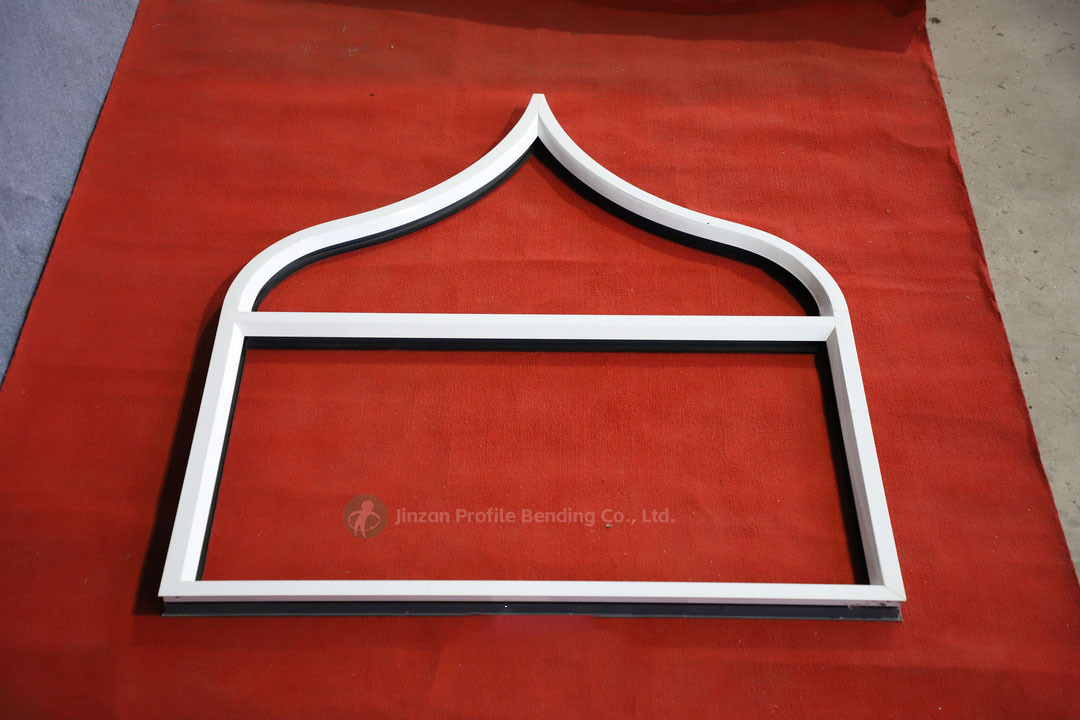Redefining the construction industry with innovative solutions, cuttin-edge technology and sustainable practices
Profile Bending 2025-06-16
Metal bending is a fundamental process in manufacturing and fabrication that combines both artistic vision and scientific principles. As industries evolve and demands for precision and creativity increase, the techniques and innovations in metal bending have also advanced significantly.
At its core, metal bending is the process of deforming metal into a desired shape. It involves applying force to the material, causing it to yield and take on a new form without breaking. The science behind metal bending relies on understanding material properties, such as yield strength, ductility, and elasticity, which dictate how metals respond to applied forces. The art lies in the creativity and skill involved in shaping these materials into functional or aesthetic forms.
Techniques of Metal Bending
1.Air Bending
Air bending is one of the most common techniques used in metal fabrication. In this method, the metal is bent by pressing it against a die, allowing the material to spring back slightly after the force is removed. This technique is favored for its versatility and efficiency, particularly in producing parts with various angles.
2.Bottom Bending
Unlike air bending, bottom bending involves a more precise process where the metal is forced into a die that matches the desired angle exactly. This method is ideal for producing parts that require consistent, repeatable bends, making it popular in high-volume manufacturing.
3.Roll Bending
Roll bending uses a series of rollers to gradually shape metal sheets into curves or cylinders. This technique is particularly useful for creating large, complex shapes, such as pipes or structural components. Roll bending can accommodate a variety of materials and thicknesses, expanding its applications across different industries.
4.Stamping
Stamping integrates bending with other processes like cutting and forming. In this method, a die is used to shape the metal into specific designs or forms. Stamping is highly efficient for mass production and is often used in the automotive and appliance industries.
5.Hydraulic Press Bending
Hydraulic press bending utilizes hydraulic force to bend metal, allowing for significant precision and control. This method is suitable for thick materials and complex shapes, making it a go-to technique for heavy-duty applications.

As technology advances, the field of metal bending has seen numerous innovations that enhance efficiency, precision, and creativity:
1.CNC Bending Machines
Computer Numerical Control (CNC) bending machines have revolutionized the metal bending industry. These machines allow for automated, highly precise bends that can be programmed for intricate designs. CNC technology reduces human error and increases production speed, making it ideal for complex projects.
2.Laser Cutting and Bending Integration
The integration of laser cutting with bending processes allows for more complex designs to be achieved with fewer steps. By combining cutting and bending in a single workflow, manufacturers can save time and resources while producing intricate shapes with high precision.
3.Smart Materials
The development of smart materials that can change shape or properties in response to stimuli opens new avenues for metal bending. These materials can be programmed to bend in specific ways, offering exciting possibilities in fields such as robotics and adaptive architecture.
4.Sustainable Practices
Innovations in metal bending are also focusing on sustainability. Techniques that minimize waste, such as optimized nesting in cutting processes, and the use of recyclable materials are becoming increasingly important. Companies are exploring energy-efficient bending methods to reduce their environmental impact.
The applications of metal bending are vast and varied, spanning numerous industries:
-Automotive Industry: Metal bending is crucial in manufacturing vehicle frames, chassis components, and body panels, where precision and strength are essential.
-Aerospace Sector: In aerospace, metal bending is used to create lightweight yet durable components, contributing to the overall efficiency and safety of aircraft.
-Construction: Structural steel bending is vital for creating beams, columns, and reinforcements in buildings and infrastructure projects.
-Art and Design: Artists and designers utilize metal bending to create sculptures, installations, and functional art pieces that challenge traditional forms and aesthetics.
The art and science of metal bending embody a harmonious blend of creativity and technical skill. As techniques evolve and innovations emerge, the possibilities for metal bending continue to expand. Understanding both the artistic and scientific aspects of this craft enables engineers, designers, and artisans to push the boundaries of what can be achieved with metal, leading to exciting advancements in various fields. Embracing these developments not only enhances productivity but also fosters a culture of innovation and creativity in the metalworking industry.